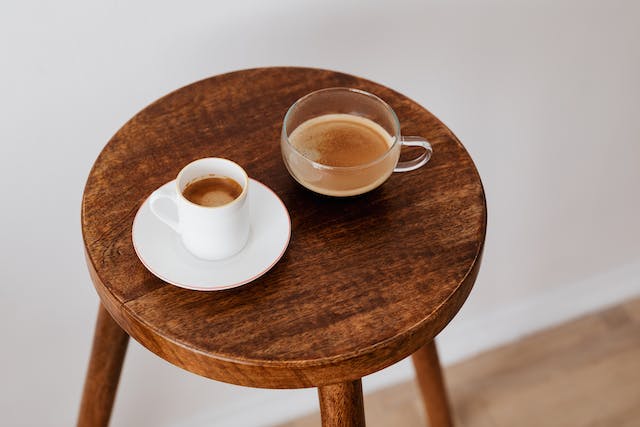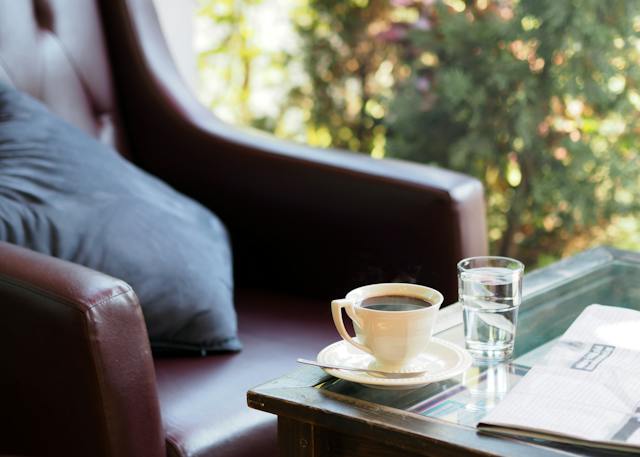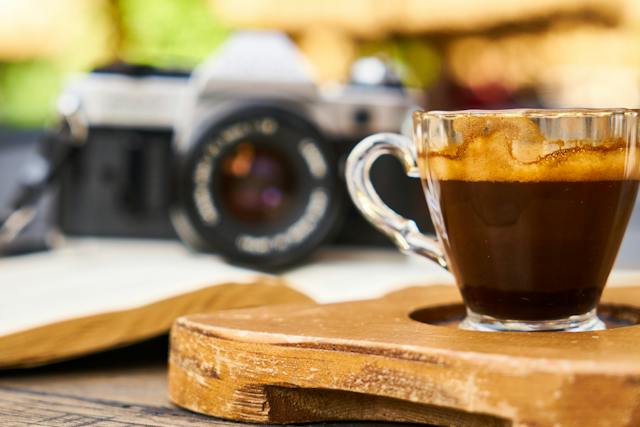What Are Espresso Drinks?
Espresso is more than just a way to get a quick caffeine fix; it’s an embodiment of culture, tradition, and art. Let’s delve into the world of espresso, exploring its essence, history, and what makes it stand out from regular coffee.
Understanding the Essence of Espresso
At its core, espresso is a method of brewing coffee by forcing a small amount of nearly boiling water under pressure through finely-ground coffee beans. This process extracts the coffee’s best features – its aroma, body, and flavor – in a concentrated form.
The grind is crucial here. For espresso, the coffee beans are ground very fine, almost powdery. This allows the water to extract maximum flavor in a short time.
The dose refers to the amount of coffee used. A typical espresso shot uses about 7-9 grams of coffee and takes about 20-30 seconds to pull.
One of the defining characteristics of espresso is the crema – a layer of creamy foam that forms on top of the shot during extraction. The crema is a sign of a well-extracted espresso, serving as a lid that helps retain the coffee’s aroma and flavor.
Exploring the History of Espresso
Espresso has its roots firmly planted in Italy. It was born out of the desire for a quicker way to prepare coffee, hence the name ‘espresso’, which in Italian means ‘fast’.
The first espresso machine was patented in 1884 by Angelo Moriondo of Turin, Italy. However, it was Luigi Bezzera who improved this design in 1901, creating a machine that could brew coffee ‘expressly’ for each customer and added steam pressure, which is now a defining characteristic of espresso.
Over the years, espresso culture spread across the globe, adapting to the tastes and preferences of different cultures. Today, espresso forms the base for many popular coffee drinks like cappuccinos, lattes, and macchiatos.
What Sets Espresso Apart from Regular Coffee?
While both espresso and regular coffee come from the same beans, it’s the brewing process that sets them apart. Here’s how:
- Pressure: Espresso is made by forcing hot water through the coffee grounds under high pressure. This leads to a more concentrated, richer flavor than regular coffee.
- Serving Size: A sip of espresso is typically served in small quantities (about 1 oz), while regular coffee is often served in larger amounts.
- Grind Size: Espresso requires a very fine grind, which contributes to the strong flavor. In contrast, regular coffee is usually medium to coarse ground.
- Speed: Thanks to the pressure-based brewing method, espresso is made much faster than regular coffee.
How To Make Espresso At Home

There’s something utterly satisfying about brewing your own home espresso. The aroma of freshly ground beans, the sound of the machine at work, and the taste of that first sip all add up to a unique sensory experience that’s invigorating and rewarding. Whether you’re a coffee enthusiast or a budding barista, making good espresso at home is a fulfilling hobby that can also save you money on daily café visits. So how do you perfect the art of homemade espresso? Let’s dive in!
Making Great Espresso with an Espresso maker
An espresso machine is an investment, but it’s worth it for the serious coffee lover, espresso machine can make an amazing coffee. Here’s a simple step-by-step guide:
- Start by selecting high-quality, dark-roast beans. Grind the coffee beans until they have a consistency similar to table salt.
- Fill your espresso machine’s portafilter with the ground coffee. Aim for around 18-20 grams.
- Tamp the grounds down with the tamper firmly but evenly to ensure a balanced extraction.
- Lock the portafilter into the machine and start the shot. A good espresso should take about 25-30 seconds to brew.
- Enjoy your espresso as is, or use it as a base for other coffee drinks like lattes or cappuccinos.
Pros: Offers precise control over grind size and extraction time.
Cons: It’s a bit pricey and has a steep learning curve for beginners.
Making Espresso Using a Moka Pot
The Moka pot is a stovetop coffee maker that produces a rich, espresso like coffee. Here’s how to use it:
- Fill the bottom chamber with cold water up to the valve or fill line.
- Insert the funnel and fill it with finely ground beans, but don’t tamp it down.
- Screw on the top chamber tightly, then place the pot on a stove over medium heat.
- When the water boils, it will push through the grounds and into the upper chamber.
- Once the gurgling sounds stop, your coffee is ready!
Pros: Affordable, easy to use, and doesn’t require electricity.
Cons: Doesn’t create true espresso with crema, and it can be tricky to clean.
Mastering the Art of Espresso Making with a French Press
Though not traditional, you can make a strong, espresso like coffee using a French Press. Here’s the process:
- Add about 2 tablespoons of finely ground beans to the French Press.
- Pour a small amount of hot (not boiling) water into the press, just enough to saturate the grounds.
- Stir the mixture and let it sit for about 30 seconds.
- Add the rest of the hot water, then place the lid on the press without pushing down the plunger.
- After 4 minutes, slowly press the plunger down.
- Pour your coffee carefully to avoid the grounds at the bottom.
Pros: Affordable, versatile, and easy to use.
Cons: Coffee can be gritty if grounds are too fine, and it doesn’t produce the crema of a traditional espresso.
Making Espresso Without A Machine

In the world of coffee, there’s nothing quite as satisfying as the rich, bold flavor of an espresso. But what if you don’t own an espresso machine? Fear not – there are several alternative methods for making your own version at home. Let’s explore!
Using an AeroPress for a Perfect cup of Espresso
The AeroPress is a versatile brewing device that can create a concentrated coffee similar to the taste of espresso. Here’s how:
- Start by grinding your beans to a fine consistency, much like table salt. You’ll need about 20 grams of coffee.
- Put a filter in the drain cap of the AeroPress and rinse it with hot water.
- Add your ground beans to the AeroPress chamber and then add hot (not boiling) water until it reaches level 2 on the chamber.
- Stir the coffee and water mixture for about 10 seconds, then attach the cap.
- After letting it steep for 30 seconds, press down on the plunger slowly until all the liquid is extracted.
- Enjoy your AeroPress sip of espresso as is or mix it with hot water or milk for an Americano or latte.
Making Hot Espresso with Household Alternatives
If you don’t have an AeroPress, other common household items can also be used to make a strong, espresso like coffee.
French Press: This method involves steeping grounds in hot water within a beaker before pressing them out. This results in a full-bodied and rich coffee, but it won’t have the same pressure-extracted intensity or crema layer that traditional espresso has.
Drip Brewer: While a drip brewer doesn’t make true espresso, using a dark roast coffee and brewing a smaller amount can result in a concentrated, flavorful cup. However, the taste will be closer to strong coffee than to espresso.
Each method has its pros and cons, and the best one for you depends on your personal taste preferences and the equipment you have available.
It takes a bit of practice to master these brewing methods, but once you do, you’ll be able to enjoy a delicious, espresso-like coffee any time you like – no espresso machine required!
Tips for a Perfect Shot of Espresso

Mastering the art of making the perfect sip of espresso is both a science and an art. It requires precision, patience, and a deep understanding of coffee. We will delve into three key areas essential for achieving that perfect sip of espresso: choosing the right beans, mastering the grind size, and avoiding common mistakes.
Choosing the Right Beans for Espresso
The first step to perfect sip of espresso starts with selecting the right coffee beans. For a classic espresso taste, you would typically go for a blend of Arabica and Robusta beans, with the latter contributing to the crema and body. However, the choice largely depends on your personal taste preference.
Look for freshly roasted beans, as they guarantee the best flavor. The roast date is often indicated on the packaging – aim for beans that have been roasted within the last two weeks. Darker roasts are commonly used for espresso due to their robust flavor profile.
Storing your beans properly is also crucial to maintain their freshness. Keep them in an airtight container at room temperature, away from sunlight, moisture, and heat to preserve their aroma and taste.
Mastering the Grind Size for Your Espresso
Once you’ve got the right beans, the next step is grinding them to the perfect size. The grind size has a significant impact on the extraction process, and therefore, the taste of your espresso.
For espresso, you’re aiming for a fine grind, but not too fine. It should feel a bit like table salt when you rub it between your fingers. If it’s too coarse, the water will pass through too quickly, resulting in a weak and under-extracted espresso. On the other hand, if it’s too fine, the water will struggle to pass through, leading to over-extraction and a bitter taste.
Investing in a good quality burr grinder will allow you to achieve consistent grind size. Remember, with the burr grinder practice makes perfect, and you may need to adjust your grind size several times until you find what works best for your machine and your taste preferences.
Common Mistakes and Solutions
Even with the best beans and the perfect grind, things can still go wrong. Here are some common pitfalls and how to avoid them:
- Incorrect Dose: Too much coffee can lead to over-extraction, while too little can result in under-extraction. A good starting point is 18-20 grams for a double shot of espresso.
- Poor Tamping: Tamping is the act of pressing down the coffee grounds in the portafilter. If it’s too light, water will find the path of least resistance, leading to uneven extraction. If it’s too hard, water will struggle to get through. Aim for a consistent and firm tamp.
- Incorrect Water Temperature: The optimal temperature for espresso is usually between 195-205 degrees Fahrenheit. Too hot, and your espresso may taste burnt. Too cold, and it could taste sour.
Remember, making the perfect espresso is a journey, not a destination. Experiment with different beans, grind sizes, and techniques until you find what gives you the best results. Happy brewing!
Making a Double Shot of Espresso
A double sip of espresso, often known as a ‘doppio’, is simply two espresso shots brewed using double the amount of coffee grounds in one extraction. This results in a beverage that is bolder and stronger in flavor and caffeine content than a single cup of espresso.
To create a double shot, you’ll need 18-20 grams of finely ground fresh coffee, and ideally, a double basket for your portafilter. Follow the same brewing process as you would for a single shot, but adjust your water to coffee ratio to account for the extra grounds. The ideal extraction time for a double shot is between 20-30 seconds, and the output should be approximately 60ml.




